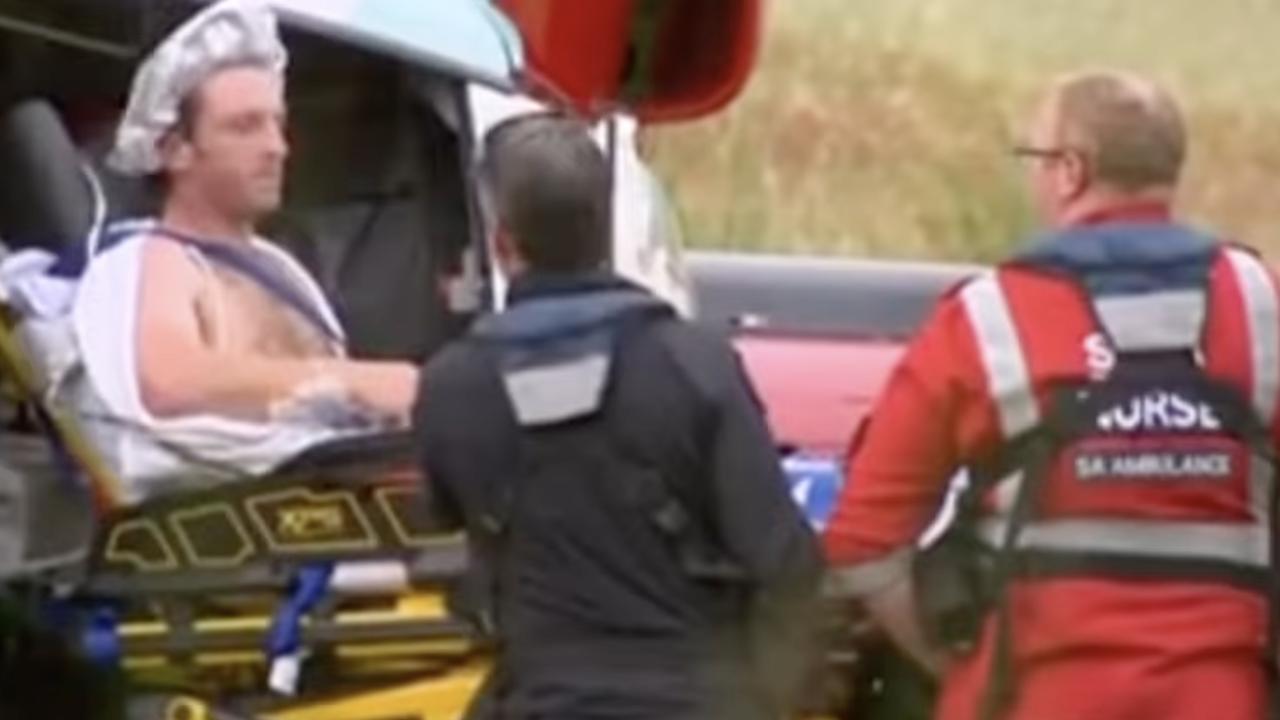The fall of Acapulco from beachside paradise to hell on earth
IT WAS once an iconic destination for glamorous beachside holidays. Not anymore. Now it’s overrun by gangs and violence.
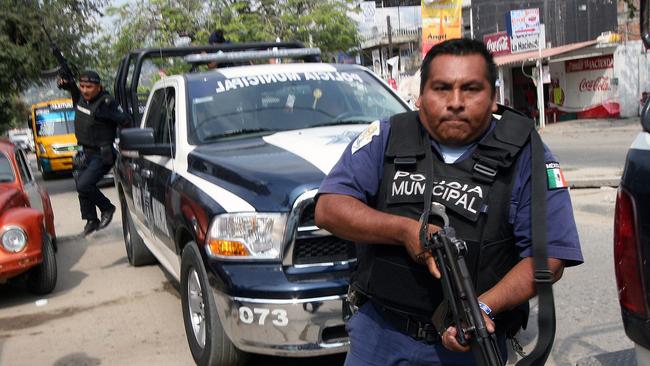
IT was once an iconic destination for a beachside holiday, a glamorous combination of sun, sand and surf immortalised in film and song.
But today, people are best advised to avoid it altogether.
The shooting deaths of three tourists in the Mexican port city of Acapulco is the latest grisly chapter in the city’s tragic decline from paradise to hell on earth.
Mexican authorities say the deaths of three men — two 21-year-olds and a 27-year-old — happened just off a stretch of beach in a tourist-hotel quarter of the city.
There was no word of a possible motive, but it’s the latest in a long list of violence in Acapulco, where authorities say at least two rival groups are fighting for control.
The US government recently banned its employees from travelling there for any reason due to the violence.
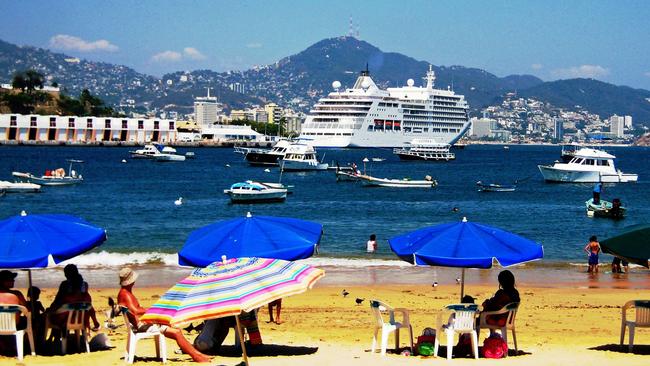
It’s a far cry from the 1950s and 60s, when Acapulco — a pretty bay surrounded by small hills on one side and the deep azure of the Pacific on the other — was a playground for the rich and famous.
Hollywood stars such as Elizabeth Taylor and Frank Sinatra would flock to the city, which became immortalised in Elvis Presley’s 1963 film Fun in Acapulco.
The elite were edged out when cheaper hotel resorts were developed throughout the 1960s and 70s but they were seamlessly replaced by tourists of a more average kind who helped simulate local business and further establish Acapulco as an iconic holiday destination.
All the while, another kind of business was beginning to flourish, separately.
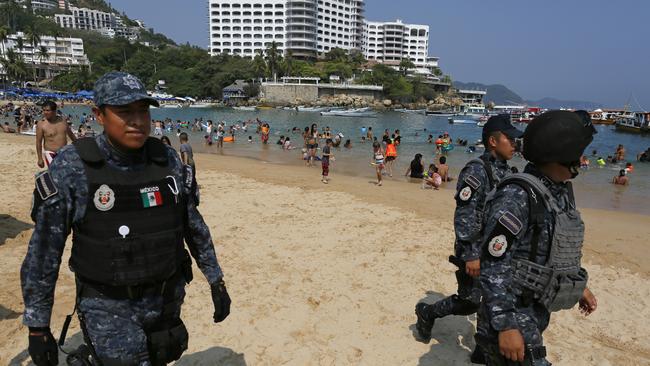
By 2010, Acapulco had become a flashpoint for Mexico’s bloody drug wars. It’s believed local violence there was sparked by the death of Acapulco’s dominating cartel, which prompted other cartels to move in with their attempts to control the city.
Violence grew and murders occurred with alarming regularity. The murder rate continued to climb year on year, and Acapulco became Mexico’s most murderous state, and one of the most violent places on earth.
Last year, the city of about 700,000 residents registered 902 homicides, according to government statistics.
The entire state of Guerrero saw 2106 killings, a whopping 33 per cent increase over the previous year.
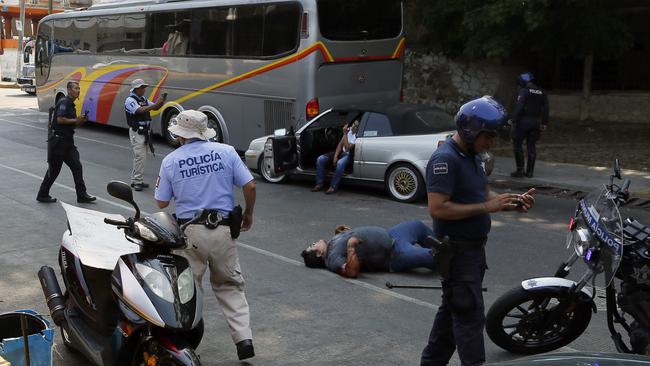
This year is shaping up to be no better.
On Good Friday, in March, the dismembered bodies of two men were found in plastic bags along the city’s iconic seaside boulevard.
The previous month, a saleswoman was shot death in broad daylight on Condesa Beach. A man was killed there days earlier.
The month before that, another salesperson, a man, was shot dead on Hornos beach.
There were 139 killings in Acapulco in January and February this year, according to The Guardian. That number is up from the 95 killings during the same two months in 2015.
However it’s lower than the murder rate seen last summer when 107 people were killed in August alone.
For a while, Acapulco’s bloody underworld managed to stay quite separate from its sunnier, more tourist-friendly exterior.
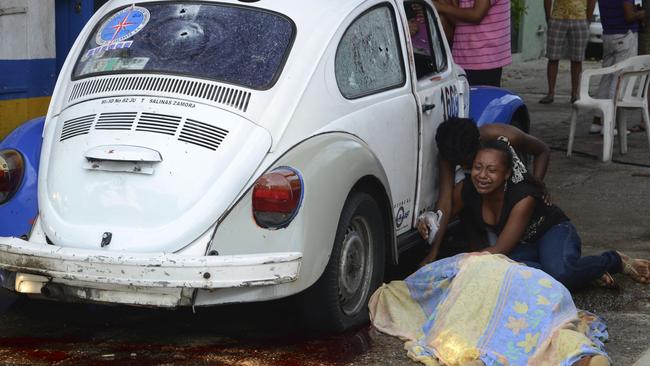
Now, beachgoers are treated to the sight of heavily-armed soldiers trudging along the beach as they struggle to contain gang violence.
It’s understood the violence involved around 40 gangs.
“We’ve never seen anything like this before. It’s a bad image for tourism,” a woman in her sixties told the Daily Beast.
“We used to be able to tell tourists the beach is safe. Now how can we look them in the eye and tell them that? We can’t.”
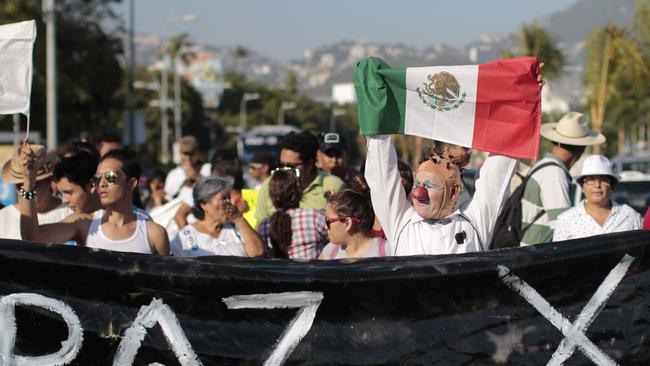
According to figures obtained by the Daily Beast, the average hotel occupancy rate for the year is down to 40 per cent.
Acapulco’s decline from enviable tourist spot to no-go zone was underscored with the US Government’s employee travel ban last month.
Last month, a spike in murders in Acapulco prompted the Department of Foreign Affairs and Trade to raise its warning level for the city, now recommending Australian citizens reconsider their need to travel there.
Australian citizens are also urged to reconsider their need to travel to the state of Guerrero, which last year held the dubious title of Mexico’s most violent state for the third year in a row.


